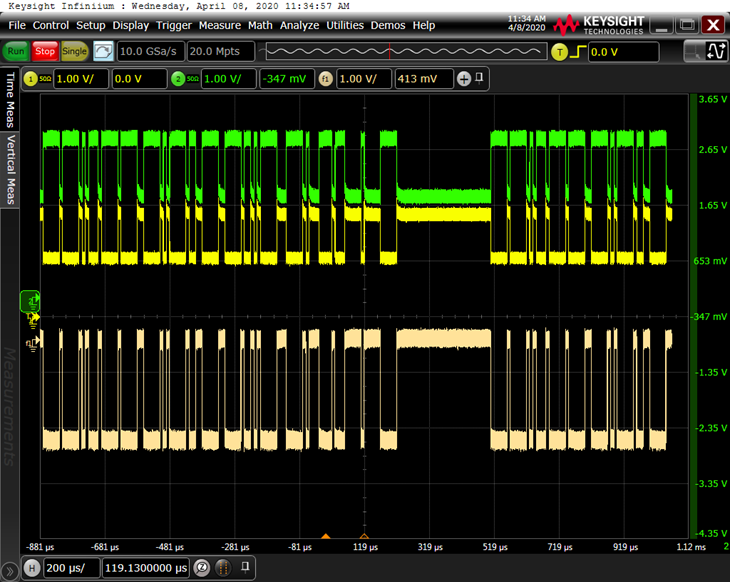Hi TI expert,
We are using SN65HVD230, and here is some test results and we have some questions, please help to check.
Block:
Test 1: Vref connect to CANH, CANL via 3.3K resistance
CH1:CAN_H、CH2:CAN_L 、f1:CAN_H-CAN_L
dominant: CAN_H:2.8V CAN_L:1.0V
Recessive: CAN_H:1.8V CAN_L:1.8V
the question is:
1. By connecting the Vref to CAN BUS via resistance, the Recessive level is pulled down to 1.8v, which is not consistent with the requirement of ISO11898 of 2.0-3.0v. Meanwhile, the datasheet describes typ2.3v and there's no MIN and MAX value;
2. The MIN of dominant CANH in the manual is 2.45v, which is not matched with the 2.75v of ISO11898. The margin of 2.8v and 2.75v is very small.
3. From dominant to recessive, the waveform will have a slow process
4. However, ISO11898 requires vysm0.9 ~1.1, which is not satisfied here.
Test 2: Remove 3.3K resistance between Vref and CANH, CANL.
CH1:CAN_H、CH2:CAN_L 、f1:CAN_H-CAN_L
dominant: CAN_H:2.8V CAN_L:1.0V
Recessive: CAN_H:2.2V CAN_L:2.2V
Here are the questions:
1. Without connecting CAN BUS to Vref via resistance, the Recessive level is 2.2v, which is consistent with the demand of ISO11898 from 2.0v to 3.0v
2. The MIN of dominant CANH is 2.45v, which is not matched with the 2.75v of ISO11898. The margin of 2.8v and 2.75v is very small
3. From dominant to recessive, there will be a slowing process in the waveform (different from test 1).
4. However, ISO11898 requires Vysm0.9 ~1.1, which is not satisfied here either.
5. Here, when CAN L changes from recessive to dominant, there is a return sulcus.
This problem has been bothering us for a long time and we hope to get your reply as soon as possible.Thank you very much.
Cyan













